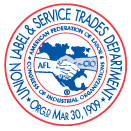The “Great Resignation” wasn’t the only evidence of worker unrest in 2021. There was a huge increase in strike activity, according to Cornell University’s ILR School, which tracked labor actions over the past year and issued a first-ever report on the statistics they compiled.
ILR compiles labor actions in a database that differs from the Bureau of Labor Statistics database because it captures data on labor actions both large and small. The BLS only captures data on work actions that involve employees over 1,000 and last more than one shift. By limiting their data to large work stoppages, the public is misinformed about the true level of workplace conflict, says ILR.
ILR documented 265 work stoppages in 2021, involving approximately 140,000 workers.
Key findings in the report include:
The amount of work stoppages and the approximate number of workers involved in work stoppages increased considerably in October and November of 2021, indicating that, relative to the rest of 2021, ‘Striketober’ reflected a meaningful change in the level of strike activity across the United States.
There was an even distribution of work stoppages across the Northeast (70), the South (71), and the West (74).
Non union workers engaged in 87 strikes, accounting for a somewhat unexpected 32.8% of the total number of work stoppages.
“Workers are turning to strikes to fight for better wages, benefits, and working conditions during the pandemic. This activity is occurring despite the obstacles current labor law poses to workers to effectively engage in their fundamental right to strike,” said Margaret Poydock, a policy analyst and government affairs specialist with the Economic Policy Institute (EPI). “Crucial reforms like the PRO Act would strengthen the right to strike and help ensure that workers have the leverage they need to secure their share of economic growth during the recovery from the coronavirus pandemic.”
ILR noted that the number of work stoppages is still lower than those found in the heyday of organized labor in the 1970s.
“One of the most prominent forms of worker power last year was the use of strikes. Throughout 2021, strikes provided workers critical leverage to bargain over fair pay, safe working conditions, and a share of the pandemic recovery,” said John Schmitt, senior economist and senior adviser at EPI. “Now, it’s up to policymakers to strengthen the right to strike, and that starts with passing the PRO Act.”
[https://www.ilr.cornell.edu/worker-institute/blog/reports-and-publications/labor-action-tracker-annual-report-2021 ](https://www.ilr.cornell.edu/worker-institute/blog/reports-and-publications/labor-action-tracker-annual-report-2021)




